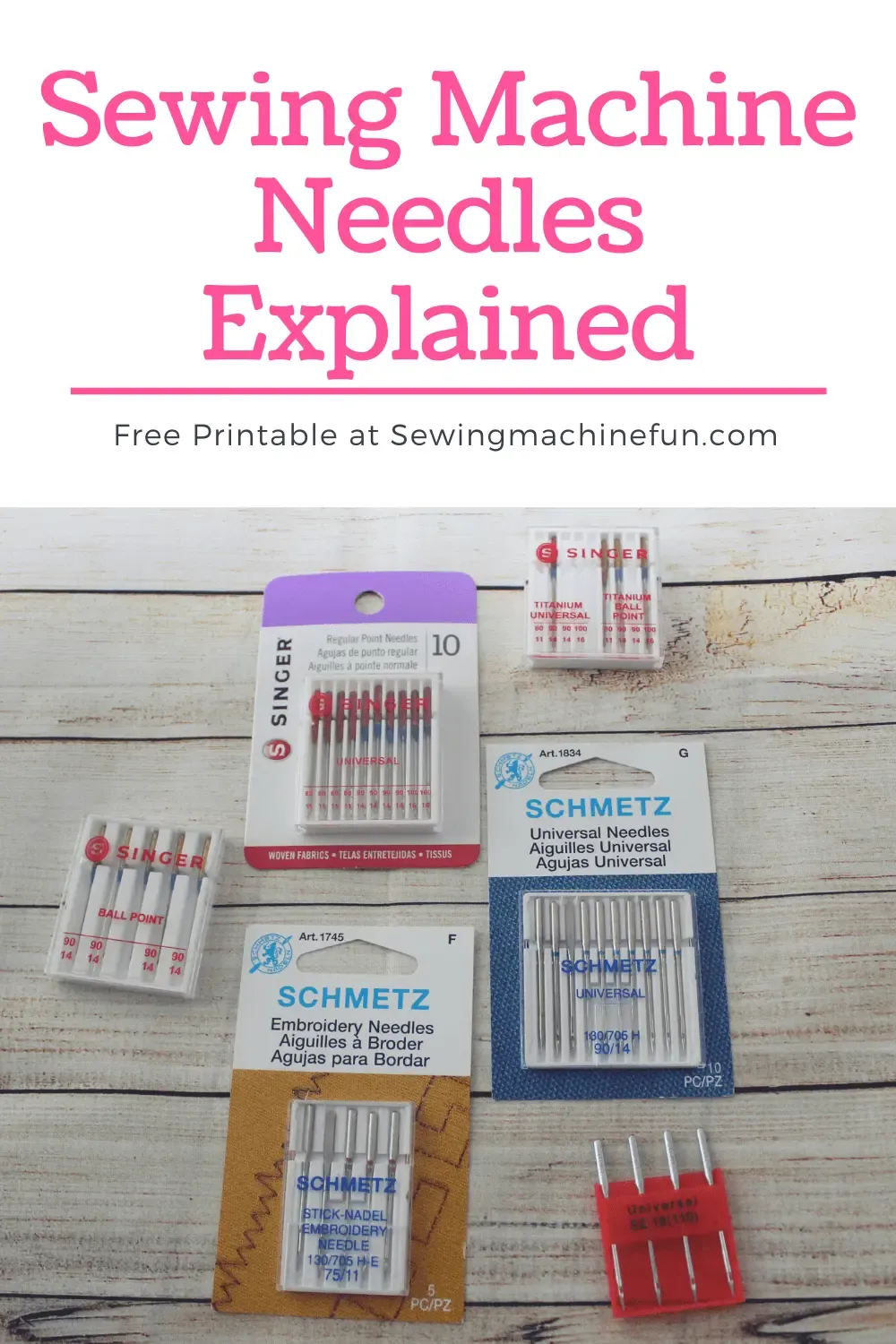Sewing Machine Needle Sizes Chart: A Complete Guide for Beginners
Sewing Machine Needles: Understanding Sizes and Choosing the Right One
Sewing Machine Needles: Understanding Sizes and Choosing the Right One
Are sewing machine needles universal and interchangeable?
As you can see, all sewing machine needles are not universal and interchangeable.
Yes, there is a universal type of sewing needle that works great for many projects, but selecting the best needle for your project may mean choosing a sharp or ballpoint needle instead for better results.
One sewing needle may work perfectly for one project but may cause major issues for another.
A leather needle will not work well on knits, and a ballpoint needle won’t work well on thick woven fabrics.
Taking care to pick the appropriate needle for your sewing is worth the time!
Sewing Machine Needle Brands
Good brands matter regarding needle performance.
Schmetz products are a go-to for durability and precision, excelling on most fabrics.
Singer quality needles, known for their strong needle materials, handle heavy fabrics effortlessly.
Janome offers specialized options, like their Blue Tip needles for embroidery or Red Tip needles for metallic threads.
Need thread compatibility with your sewing machine?
Organ needles are reliable and affordable for various sewing tasks.
Understanding industrial sewing machine needles is important for best performance.
Explore a sewing machine needle chart to compare top options from trusted sewing machine brands!
Machine Sewing Needle Sizing & Types Chart
Looking for a simple visual of sizes to choose machine sewing needles? We've got you covered with this chart right below. Keep in mind that this is not a definitive list. There can be sizes that aren't listed but these are the basics you'll find when searching.
In the left column is the type of needle, the middle column has the size(s), and the third column explains some of the common uses or types of fabric you would use the needle for sewing.
| Machine Sewing Needle Types | ||
|---|---|---|
| Type | Size (US) | Common Uses |
| Universal | 60/8, 65/9, 70/10, 75/11, 80/12, 90/14, 100/16, 110/18, 120/19 | Most woven fabrics, knits, faux leather/suede |
| Ball Point (Jersey) | 70/10, 80/12, 90/14 | Stable knits and jersey |
| Stretch | 70/11, 75/11, 90/14 | Slick knits, spandex, elastic, silk jersey |
| Jeans/Denim | 100/16, 110/18 | Denim, canvas, twill |
| Quilting | 75/11, 80/12, 90/14 | Cotton quilt fabrics, piecing, batting |
| Leather | 90/14, 100/16, 110/18 | Natural leather/suede |
| Sharp | 60/8, 65/9, 70/10, 80/12, 90/14 | Fine/delicate fabrics, taffeta, faux leather/suede |
| Topstitch | 80/12, 90/14, 100/16 | Heavier threads/fabrics for decorative stitching |
| Twin | 75/11, 80/12 | Woven/knit fabrics for decorative zig zags, hems |
Standard Machine Needles
Most sewing machine needles tend to all be about the same length (about 1.5” (inches) long), but will vary in thickness and the shape of the shaft. While hand sewing needles tend to be larger and thicker the lower the size number, regular “universal” sewing machine needles are the opposite.
Generally, a high size number indicates a weightier and thicker needle. Machine needles are labeled with both a European and an American size number, usually separated by a slash mark. The European (first) number is higher and reflects the shaft’s diameter in the metric system.
All sewing machines will come with a basic set of needles for the most common functions. Always consult your machine’s manual for detailed information. Industrial sewing machines will also use slightly different needles than regular commercial (or “home”) sewing machines, so it’s best to check with your machine’s guide.



Tegs:
Search
Recent Posts
-
Owl Sewing Pattern: Bring a Touch of Wisdom and Whimsy to Your Sewing Projects
Apr 14 2025
-
Sew Leather Like a Pro: The Best Sewing Machines for Leatherwork
Apr 14 2025
-
Gym Bag Sewing Pattern: Create a Personalized and Practical Carry-All
Apr 14 2025
-
Sewing Stretch Fabric Made Easy: Choosing the Right Needles
Apr 14 2025
Subscribe to Updates
Get the latest posts and fashion insights directly in your inbox.